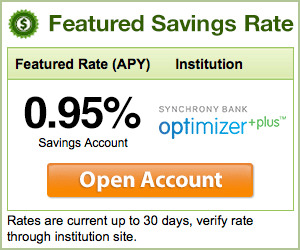
Credit cards that offer a 0% balance transfer option can be a great way to climb out of debt. My wife and I used these offers to pay more than $20,000 in credit card bills in three years. While the allure of no interest borrowing is very attractive, there are several pitfalls you must avoid. You will
So before you choose your next balance transfer card, make sure you avoid these 7 "gotchas". Plus, be sure to check out our how-to Infographic on Transferring a Credit Card Balance!
1. Balance Transfer Fees
As the saying goes, there is no free lunch. In the case of zero percent balance transfer cards, don’t forget about the balance transfer fees. There was a time when you could find a number of no-fee options. Today, the standard balance transfer fee is three percent of the amount of the transfer. If you find an offer that charges more than three percent, keep looking. If you’re transferring a $5,000 balance, expect to pay a fee of $150 right up front. Today, there is one card that offers a no fee 0% balance transfer, and that’s the Slate from Chase card (0% for 15 months).
In many cases, paying a balance transfer fee is worth it for a lower interest rate, but you need to do the math. Figure out how much the reduction in interest will save you, and then compare that to the balance transfer fee you’ll pay. The longest introductory rate offers today last for 18 months, which makes a standard three percent fee well worth the cost in most cases.
2. Higher Minimum Monthly Payments
Even if you opt for a 0% introductory APR balance transfer deal, the minimum payment could be higher than what you’ve been paying. It all depends on how the minimum payment on your current and new cards is calculated. A higher minimum payment can present two gotchas. The first, of course, is the burden of a higher minimum payment. If you’re planning to pay more than your minimum payments so you can pay down the balance faster, this may not be such a big deal for you. But if your main goal with a balance transfer is to get out from under budget-crushing minimum monthly payments, watch out for this gotcha.
The second gotcha is that you may not get the full benefit of the introductory rate. One of my favorite all-around cards is the Discover It™ card. I’ve carried the card for years and taken advantage of its 0% offers. If you dig into the fine print, however, you’ll find this nugget: “The minimum payment requirement can cause promotional balances to be paid in full prior to the end of the promotional period.” Caveat emptor.
3. Lower Credit Limit
Another potential issue with a balance transfer credit card is the credit limit. Sure, your current card might have a balance of $7,000, but that doesn’t necessarily mean you’ll be approved for that large of a balance transfer to your new card. In this case, you’ll need to pull out your calculator to determine if a partial balance transfer is right for your situation. In some cases, transferring as much as possible to the lower-interest card can allow you to pay off the old card with the higher balance faster. Alternatively, you may end up applying for multiple balance transfer cards, which is exactly what I did several years ago. Unfortunately, you won’t know your new credit card’s limit without applying first.
4. Credit Score Hit
As with applying for any other form of credit, applying for a balance transfer credit card can hurt your FICO score in two ways. First, any inquiry generated when you apply for credit will lower your score. And second, maxing out the new card with the balance transfer can also lower your score.
The key thing to watch here is your overall debt-to-credit ratio. If you end up canceling old credit cards and using up your entire balance on your new balance transfer card, you may see a serious ding in your credit score. Of course, if you pay down that balance quickly, the problem won’t last for long. And you can always keep your old credit card accounts open, even if you don’t plan on using the cards.
5. Interest on Other Payments
Keep in mind that your balance transfer credit card will most likely have one introductory APR for your actual balance transfer and another APR for purchases made with the card. And credit card companies routinely apply your minimum credit card payments to the low-interest purchases first. Only after those are paid off do minimum payments work to pay down your higher-APR purchases or cash advances.
However, the latest credit card rules from the Federal Reserve require credit card companies to apply any payment over your monthly minimum to the highest-interest balance on your credit card. So if you’re going to pay more than your monthly minimum payments, those purchases will actually be paid down faster. Still, it usually makes the most financial sense to use one card specifically for balance transfers and another for everyday purchases.
6. High Post-Promotion Rates
One very common gotcha with balance transfer credit cards is a sky-high APR after the promotional period. Be very careful about this, and always read the fine print. Be sure you know exactly how much you’ll pay on your balance transfer if you continue to carry the balance past the promotional period. Even if it seems like your current credit card has a high interest rate, you may save money in the long run by sticking with it, rather than transferring to a card with an even higher interest rate past the six to eighteen month promotional period.
One option is to continually transfer your balance from zero percent offer to another until the debt is paid in full. There are, however, risks to this approach. First, it assumes that 0% balance transfer offers will be available 18 months from now when your current offer expires. And second, even assuming such offers are available, it assumes you’ll qualify for them.
Even if you accept this risk, it’s worth considering what the post-promotion interest rate will be before applying.
7. Shortened Promotional APRs
Finally, make sure you understand exactly how long the promotional period lasts. After the financial crisis, these promotional periods were significantly shortened. Some 0% introductory rates last no longer than six months, and after that, they can introduce those sky-high rates we just talked about. So be sure you completely understand how long the promotional period will last, and calculate whether or not the balance transfer will actually save you money. If you can pay off the debt in just a few months because of lower rates, go for it. If not, you may want to rethink your strategy.
Clearly, there’s a lot that goes into choosing the right balance transfer credit card. So before you choose a card that looks good on the surface, check for these seven gotchas in the fine.
Rob Berger is the founder of the popular personal finance blog, the Dough Roller. He practices law in the District of Columbia and lives in Northern Virginia with his wife, their two children, and the family mascot, a shih tzu named Sophie.
Discover it™ - 14 Months at 0% Interest
Our recommended balance transfer credit card comes from Discover and includes 14 months at zero interest applied to balance transfers and new purchases. Earn 5% cash back on up to $1,500 in rotating categories, and another 1% on all other purchases. Get the full details when you click the "Apply" button to the left.








